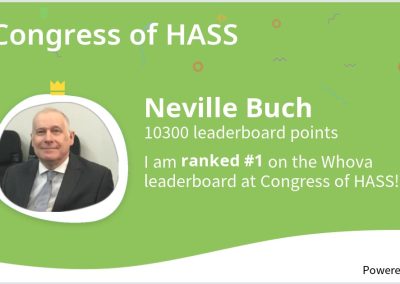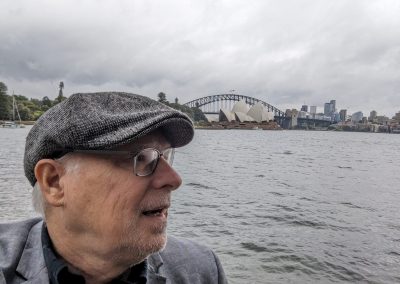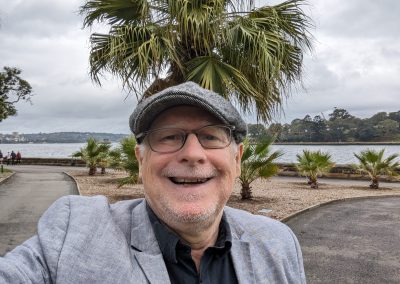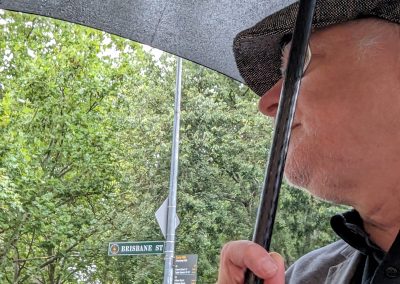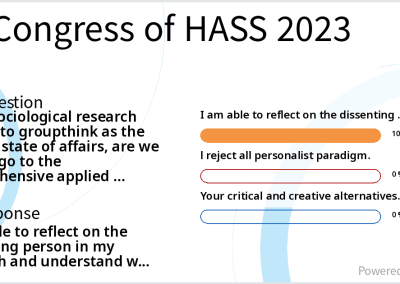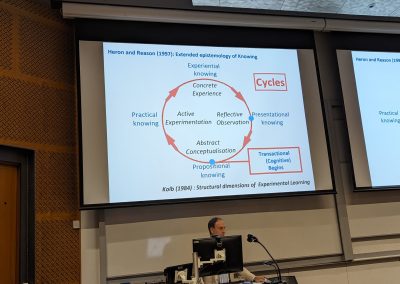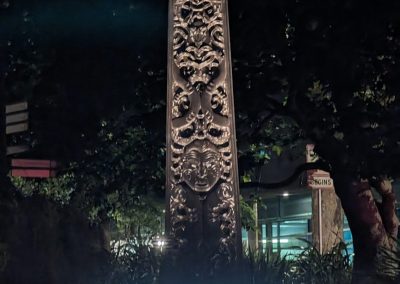I am alone, not like this blank page to which I start to write. We are thrown into a world (Heidegger).
I woke up slowly this morning. I slept in. Each morning since 17 December 2016, I awake with a sense of disorientation, and in loss and grief. I am alone.
Isolation is different from person to person, and what is common is the experience is only to a smaller group of persons. I am a widower who lost the love of his life at her young age of 55 years. The context immediately places the loss and grief in a certain way. My wife was “sick” with a brain cancer and I was her carer for seven years. It has been seven years since Ruth died. While Ruth lived with the ‘death sentence’, she was determined to live life as best she could on her own terms. Her work career had just started after many years of study and parttime work, and then it was turned around. She took on a retired life in those seven years, that meant that I did not, or could not, engage as much as, in retrospect I wish I had. Worse, being close to her elderly mother it seemed to me that she became an elderly companion to her mother, well-aged beyond her actual years. It seemed I suddenly became married to a much older woman who I was caring for. It created something of a barrier for myself and my two daughters who were frustrated that their mother had prematurely loss her vigour. We had just hit on a solution to which Ruth agreed – that she would return to her social work studies – when the tumour returned, and her hope for an M.A. in social work was abandoned. Then the laborious and dark year of 2016, of initial vain hope, heartbreak, and isolation. Ruth died alone. Ruth did not die alone. It is a paradox. No one could really be there for Ruth as she was in the dying stages of six months. She was alone, slipping away from us. Nevertheless, we – I, family, friends – were in her presence to the end. I felt the distancing from the love of my heart. The love remained, but it became distant, as Ruth slipped into long periods of sleep, and there was less engagement to express love: too few hugs, too few words. The barrier was also self-preservation in the shock of losing not only a loved one, but my life, my life with Ruth. Ruth was alone. I was alone.
Writing these words on the remaining blank page, tears are running down my face after seven years.
Being alone, however, in the last seven years has another dimension.
I have just completed four conferences in two weeks, as I write these words on a Sunday morning and afternoon from Room 603 at the Marriot in Auckland. It is a sign of an achievement in my new life, and yet I feel very much alone, a different kind of aloneness. In my life with Ruth, we had compromised much in our work careers, mutually. Both of us lost those opportunities of advancing in our career. Both of us had hopes for advancement, but I was particularly ambitious to be the teacher and researcher at the head podium of the conference. But to achieve such ambitious status, I would have to have had the paid position in the university, but much more, I would have had to put in the required hours away from the family. This was not possible in life with Ruth, and it was part of our mutual compromise.
Now in the absence of Ruth, the opportunities have come too late. For the whole of my life, with or without Ruth, it was always too late: too late to make my own mark in the cognitive revolution of the 1960s and 1970s, being too young. Too late as an undergraduate student, moving on into my late 20s. Too late as a doctoral student in my early 30s, which meant too late in my initial career as a higher education researcher in my late 30s. Very few excelling scholars can get ahead of the crowd and stake the direction of the mass culture. Working in a university office, you are in the midst of the madness with temporary and insignificant tasks. It was only in the years after I left the Office of Vice-Chancellor, University of Melbourne, that it made any sense what was happening. It is the concept of historical distancing. Hegel’s ancient owl. Now, I can write the exceptionally important papers for the intellectual histories of higher learning, but, tragically, my colleagues have moved onto other important and critical matters; so, who cares what a 62-year-old has to say, “isn’t he retired.” I am alone.
Furthermore, what I have to say is incredibly discomforting to my university colleagues who remain in the madness. I am saying, for the communities I work for, is that academics across the fields, are only “shifting the deckchairs” of higher learning, and higher learning still remains as aloof to the lebenphilosophie of public space communities. There are too few scholars, who are actually inside the public space communities, translating the vast literature of higher learning, and we are the ones with the crushed university ambitions. And we are also the ones without payment for our work since voluntary work is so undervalued in our society. Academics talk about doing voluntary work for the scholarly societies but they forget that they do so from a wage that is paid by the university. I am alone.
Ambition is thawed away, not merely in the closed-off opportunity. One is self-aware of the shortfall of living one’s life. For me, it was always languages. It was something in my childhood disposition, that growing up I could never distinguish well, audiologically, in pronunciation and tone. Tone also meant that I could express anger without understanding the tone heard as aggression. If I felt the aggression in myself, I had translate it as frustration at the lack of attention I felt I was receiving. Life had meant I knew humility, but the lack of attention was interpreted in my historian’s frame: I was continually misunderstood due to wilful historical forgetfulness. Academics caught up in rabbit holes of specialisation just did not want to know, and why should they care? I was alone.
I must admit to the marginality of attending and participating in the four conferences, and that I was not alone. It is a similar paradox of the life with Ruth, mentioned above. Academics feel that their position is at the margins. Everyone in public space communities feel at the margins. It is a strange life-experience of being alone, and very much not alone. So, to get academic attention, what does the literature says on being alone?
Most the literature relates dispassionate and clinical studies, as expected, but there were nine works directly related to my argument on being alone (Hughes and Gove 1981; Ranta, Rita, Lindstrom 1993; Stack 1998; Coleman 2009; Gaymu, Springer, and Stringer 2012; Demey, Berrington, Evandrou, and Falkingham 2014; Holt-Lunstad, Smith, Baker, Harris, and Stephenson 2015; Frank, Froese, Hof, Scheffold, Schreyer, Zeller, and Rödder, 2017; Wilkinson, Tomlinson, and Gardiner 2017).
As to the dispassionate and clinical studies, the literature mostly focuses on the conditions of older persons in Asian cultures and philosophies (Raymo 2015; Kim 2015; Min-Ah Lee 2016), with two European or western paralleled concern (Kemp and Acheson 1989; de Jong, Dykstra, Schenk 2012). Another area of clinical concern was young persons living alone in one-person households (Cheung and Yeung 2015, 2021);
- Raymo (2015) uses Japanese census data to evaluate how much of the growth in one-person households at ages 20–39 between 1985 and 2010 is explained by change in marital behaviour and how much is explained by other factors. The analyses indicate that marital behaviour had correlated with certain increase in one-person households for men and three-fourths of the increase for women. That is interesting but that does not go anywhere in understanding the film, Lost in Translation. Surprise, surprise, the second set of analyses indicated that those living alone are significantly less happy than those living with others.
- Kim (2015) has a more honest appraisal from the data, concluding it is not clear whether public transfers for the elderly will increase or decrease their independent living. Furthermore, as is supported in much intergenerational studies of the last 60 years, multigenerational co-residence is prevalent and norms and preferences for that form of living arrangement remain strong. I do love my daughters living at home when they do;
- Min-Ah Lee (2016) used data from the four waves of the Korean Longitudinal Study of Ageing (KLoSA) over a period of six years, discrete time event history analyses were conducted to analyse the determinants of the transition to living alone for older Koreans. What was found was that home ownership and higher household income at a previous wave were negatively associated with the transition to living alone in general, whereas prior depressive symptoms were positively associated with the transition to living alone for older Koreans. It is certainly counter-intuitive. To say, physical health conditions did not have significant effects on the transition to living alone is aggressively opposite of the lebenphilosophie, as the global population finds it. Although Min-Ah Lee does conclude that the transition to living alone in disadvantaged older adults may amplify the harmful effects of living alone on their well-being in the long run, his approach to the data is problematic. Statistics is always subject to false reading from what the expectations of the participants have in what should be reported;
- In 1989 Kemp and Acheson did better work in tying the experience of being alone to the care of community. They sampled 2,000 elderly people from 20 general practitioner practices in the East Anglia area. Those living alone exhibit a higher level of independence than those living with others, but nearly a quarter of those aged 75 and over living alone did rely on someone else entirely for specific tasks;
- de Jong et al (2012) used data from the Generations and Gender Surveys of three countries in Eastern Europe and two countries in Western Europe. Latent Class Analyses was applied to develop intergenerational support types for (a) co-residing respondents in Eastern Europe, (b) respondents in independent households in Eastern Europe, and (c) respondents in independent households in Western Europe, respectively. On this basis, a six-way typology was produced. It is fascinating reading, but, again, the lebenphilosophie is simply not there;
- In Cheung and Yeung’s (2015, 2021) major paper, they drew data (from previous studies to the meta-data) from a subsample of young adults (aged between 20 and 35) from China 1% Population Sample Survey 2005 (ni = 582,139; nj = 345). They concluded that young adults living in one-person households (OPHs) had increased remarkably worldwide. This analysis is informative to both living alone and having to migrate to live alone. A second paper was published, but it appears almost the same as the earlier study.
There is an academic game-playing which distorts the intelligence in the academic research and findings, and particularly, missed lebenphilosophie.
As to the actually academic articles writing on the being alone:
- In 1981 Hughes and Gove immediately went to the much better research, and providing an examination of the effects of living alone on mental health, mental well-being, and maladaptive behaviours. Their work reflects the general ethos of the 1980s, in that there was much more concern among academics for compatibilist philosophy and horizon worldviews. The work in academy, in later decades, trended the statistical analysis without the quality consideration of the philosophic concepts in the works. Hughes and Gove showed there is no evidence that persons who live alone are selected into supported living arrangement because of preexisting psychological problems, noxious personality characteristics, or incompetent socioeconomic behaviour, and that, contrary to structural functionalism or symbolic interactionism, unmarried persons who live alone are in no worse, and on some indicators are in better, mental health than unmarried persons who live with others. The big gap in their work is the absence of references to widows and widowers. Most academics cannot deal with loss and grief until it becomes their own lebenphilosophie;
- In 1993 Ranta et al produced a very bland paper, which reported to speak to “Competition Versus Cooperation”, Admittedly it was an anthropological paper about food foraging alone and in groups. They argued that the option of foraging alone may easily be a better strategy than that of a low-ranking individual foraging in a group. However, as a generic argument, it is bullshit. As interdisciplinary scholars are aware, the competitive and Darwinian social models does not work for the benefit of the individual nor the group. The argument of Ranta et al is so obviously agenda-ed, as all academic works are. There is no evidence that the lebenphilosophie of a low-ranking individual is better without the deep group interaction and worldview;
- In 1998 Stack pointed out that previous research on loneliness had often neglected the role of marriage and family ties, comparative analysis, and cohabitation. Using the data from 17 nations in the World Values Survey, they concluded (1) marriage is associated with substantially less loneliness, but parenthood is not, (2) being married was considerably more predictive of loneliness than cohabitation, indicating that companionship alone does not account for the protective nature of marriage, (3) both marriage and parental status were associated with lower levels of loneliness among men than women, (4) marriage is associated with decreased loneliness independent of two intervening processes: marriage’s association with both health and financial satisfaction, (5) the strength of the marriage-loneliness relationship is constant across 16 of the 17 nations. Again, there is not the consideration of the end of marriage through experience of ‘pre-mature’ death;
- In the new century Coleman (2009) went to the characteristic urban experience of solitude and its challenges to traditional anthropological theories of urban life. It challenged theoretical perspectives with ethnographic cases of gay identities and ‘being alone together,’ drawn from fieldwork in New Delhi, India. Personally, in the different context of heterosexuality, I found Colman’s heuristic concept of ‘social solitude’, in contrast to ‘solidarity’, and his examination of the political and philosophical consequences of focusing on solitude as an urban way of life and an expression of sexuality, an epistemic fit. Coleman drew his informative model from a reading of Deleuze;
- Gaymu et al (2012), finally, lands on the lebenphilosophie directly. They looked at the influence of living conditions on the life satisfaction of men and women over 60 years of age in ten European countries using data from the European survey SHARE 2004 (wave 1). The features that they examine are the same of my lebenphilosophie argument: income levels, homeownership, and the relationship between family roles and economic status;
- Demey et al (2014) examined studies which found that the duration since a union dissolution and the number of union dissolutions are associated with psychological well-being. Again, the lebenphilosophie of widows and widowers are not relevant – not a matter of ‘union dissolution’ in the full semantics of the experience;
- Holt-Lunstad et al (2015) comes closer with an examination of actual and perceived social isolation in that both are associated with increased risk for early mortality. They conducted a literature search of studies (January 1980 to February 2014) using MEDLINE, CINAHL, PsycINFO, Social Work Abstracts, and Google Scholar. Again, the interdisciplinary scholarship shows that there is something is wrong, when concluding no differences between measures of objective and subjective social isolation. Their approach was admittedly, marginally, to the compatibilism side, and they did say, “the influence of both objective and subjective social isolation on risk for mortality is comparable with well-established risk factors for mortality”, but that overlooks many object-subject lessons in the interdisciplinary knowledge;
- Frank et al (2017) go directly to my main point here: “The ability to conduct interdisciplinary research is crucial to address complex real-world problems that require the collaboration of different scientific fields, with global warming being a case in point.” Their classroom experiment reminds me of David Kayrouz’s presentation at the PESA conference on knowing and knowledge (images of Kayrouz’s models in the photo album);
- Wilkinson et al (2017), finally, goes to my sorrowful-happy reflections of my life with Ruth, with their examination of the dominant understanding of work–life balance or conflict as primarily a ‘work–family’ issue by exploring the experiences of managers and professionals who live alone and do not have children – a group of employees traditionally overlooked in work–life policy and research but, significantly, a group on the rise within the working age population. Of course, Ruth and I had two wonderful children, but Wilkinson et al’s analysis does not go to lebenphilosophie of widows and widowers, with or without children.
The always continuing conclusions
I have spent this Sunday writing this “academic article”, without family close-by, and without a loving partner, has provided the insight to what being alone is about. As an interdisciplinary scholar, outside the university, and for the public square community, I am alone. So much for academic collegialism! Still, I am supported in kindness by individual academics and former academics. And I thank them dearly, for when I do not feel alone.
REFERENCES
Cheung, A. K.-L., & Yeung, W.-J. J. (2021). Socioeconomic development and young adults’ propensity of living in one-person households: Compositional and contextual effects. Demographic Research, 44, 277–306. https://www.jstor.org/stable/27032913
Coleman, L. (2009). Being Alone Together: From Solidarity to Solitude in Urban Anthropology. Anthropological Quarterly, 82(3), 755–777. http://www.jstor.org/stable/20638659
de Jong Gierveld, J., Dykstra, P. A., & Schenk, N. (2012). Living arrangements, intergenerational support types and older adult loneliness in Eastern and Western Europe. Demographic Research, 27, 167–200. http://www.jstor.org/stable/26349921
Demey, D., Berrington, A., Evandrou, M., & Falkingham, J. (2014). Living alone and psychological well-being in mid-life: does partnership history matter? Journal of Epidemiology and Community Health (1979-), 68(5), 403–410. http://www.jstor.org/stable/43281754
Frank, A. M., Froese, R., Hof, B. C., Scheffold, M. I. E., Schreyer, F., Zeller, M., & Rödder, S. (2017). Riding alone on the elevator: A class experiment in interdisciplinary education. Learning and Teaching: The International Journal of Higher Education in the Social Sciences, 10(3), 1–19. https://www.jstor.org/stable/48561574
Gaymu, J., Springer, S., & Stringer, L. (2012). How does Living Alone or with a Partner Influence Life Satisfaction among Older Men and Women in Europe? Population (English Edition, 2002-), 67(1), 43–69. http://www.jstor.org/stable/23358620
Holt-Lunstad, J., Smith, T. B., Baker, M., Harris, T., & Stephenson, D. (2015). Loneliness and Social Isolation as Risk Factors for Mortality: A Meta-Analytic Review. Perspectives on Psychological Science, 10(2), 227–237. http://www.jstor.org/stable/44290063
Hughes, M., & Gove, W. R. (1981). Living Alone, Social Integration, and Mental Health. American Journal of Sociology, 87(1), 48–74. http://www.jstor.org/stable/2778539
Kemp, Frances M., and Roy M. Acheson. “Care in the Community – Elderly People Living Alone at Home.” Community Medicine 11, no. 1 (1989): 21–26. http://www.jstor.org/stable/45156782.
Kim, E. H.-W. (2015). Public transfers and living alone among the elderly: A case study of Korea’s new income support program. Demographic Research, 32, 1383–1408. http://www.jstor.org/stable/26350156
Min-Ah Lee. (2016). Effects of Economic and Health Conditions on the Transition to Living Alone: A Longitudinal Study on Older Koreans. Development and Society, 45(3), 591–617. http://www.jstor.org/stable/deveandsoci.45.3.591
Ranta, E., Rita, H., & Lindstrom, K. (1993). Competition Versus Cooperation: Success of Individuals Foraging Alone and in Groups. The American Naturalist, 142(1), 42–58. http://www.jstor.org/stable/2462633
Raymo, J. M. (2015). Living alone in Japan: Relationships with happiness and health. Demographic Research, 32, 1267–1298. http://www.jstor.org/stable/26350152
Stack, S. (1998). Marriage, Family and Loneliness: A Cross-National Study. Sociological Perspectives, 41(2), 415–432. https://doi.org/10.2307/1389484
Wilkinson, K., Tomlinson, J., & Gardiner, J. (2017). Exploring the work–life challenges and dilemmas faced by managers and professionals who live alone. Work, Employment & Society, 31(4), 640–656. https://www.jstor.org/stable/26500128
Yeung, W.-J. J., & Cheung, A. K.-L. (2015). Living alone: One-person households in Asia. Demographic Research, 32, 1099–1112. http://www.jstor.org/stable/26350146
Neville Buch
Latest posts by Neville Buch (see all)
- Dear grossly, ethically, corrupted - December 21, 2024
- Thoughts with a Professional History colleague on “Artificial Intelligence” - December 21, 2024
- Stephanie M. Lee on “AI by omission”, The Chronicle of Higher Education, Thursday, December 19, 2024 - December 20, 2024

